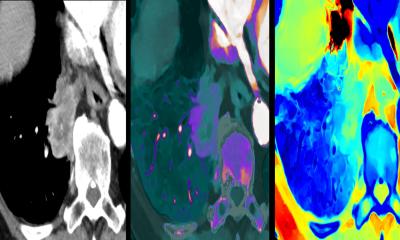Coronary Artery Disease
Benefits of instant wave-free ratio (iFR) compared to fractional flow reserve (FFR)
Royal Philips today announced that the results from two large clinical trials comparing patient outcomes using instant wave-free ratio (iFR) and fractional flow reserve (FFR) in the diagnosis and treatment of heart disease have been published in the New England Journal of Medicine. First released in 2013, iFR is an innovative pressure-derived index unique to Philips, a global leader in image-guided therapy solutions, allowing hyperemia-free physiological assessment of coronary blockages.

Findings from the DEFINE FLAIR and iFR Swedeheart trials, which studied 4,529 patients as part of the largest randomized coronary physiology outcome studies to date, were presented at the 2017 American College of Cardiology’s Annual Scientific Session & Expo (ACC.17) in Washington, D.C., March 17–19, 2017. Investigators Dr. Justin Davies of Imperial College London in the United Kingdom, and Dr. Matthias Götberg of Lund University in Sweden, presented one-year outcome data showing that, compared to an FFR-guided strategy, an iFR-guided strategy offers a more cost-effective and faster diagnostic solution with reduced patient discomfort, while delivering consistent patient outcomes.
“Findings from these two major clinical outcome studies have the potential to significantly improve the use of coronary physiological assessment,” said Dr. Manesh Patel, MD, FACC, FSCAI, Chief of the Division of Cardiology and Co-Director of the Duke Heart Center at Duke University School of Medicine. “One of the barriers to iFR adoption has been the lack of outcome data, however now we have evidence that an iFR-guided treatment strategy is as reliable as an FFR-guided strategy with regard to future cardiovascular events. Additionally, I believe iFR will reduce patient discomfort. Together the results of these studies demonstrate large simple trials in clinical practice can be done, and should remove any barriers to the use of coronary physiology in interventional procedures."
In image-guided therapies of coronary artery disease, clinicians have been using FFR in addition to angiographic images to assess the physiology of a suspected blockage in coronary arteries to decide, guide, treat and confirm the appropriate therapy. iFR is the next generation physiologic measurement that uses the same pressure guide wires and equipment as FFR, but avoids the administration of hyperemic agents to the patient that is required with FFR.
The DEFINE FLAIR and iFR Swedeheart trials demonstrate that, compared to FFR, iFR offers reduced procedure time, cost and complexity without degradation of major adverse cardiac events (MACE). The primary endpoint of DEFINE FLAIR and iFR Swedeheart was MACE rate at one year in iFR and FFR groups. DEFINE FLAIR shows MACE rates of 6.8 percent in the iFR-guided arm versus 7.0 percent in the FFR-guided arm, p=0.003 for non-inferiority. The iFR Swedeheart outcome data showed MACE rates of 6.7 percent in the iFR-guided arm versus 6.1 percent in the FFR-guided arm, p=0.007 for non-inferiority.
The two trials further established that iFR offers a faster procedure while almost completely eliminating severe patient symptoms as compared to FFR. The DEFINE FLAIR study found that due to eliminating the need for a hyperemic drug, iFR-guided treatments lead to a 10 percent reduction in procedural time versus FFR-guided treatment (p=0.001), while reducing patient discomfort by 90 percent (p<0.01). Side effects of hyperemic drugs can include increased heart rate, pounding of the heart, flushing, elevated temperature and feelings of impending doom, which simulate physical and emotional distress.
“The clinical validation of our innovations is a critical element of our strategy in image-guided therapy,” said Christopher Barys, Business Leader at Philips Volcano. “The outcomes of these clinical studies underpin the value of iFR and its benefits for patient safety and effective diagnoses. It is our hope that the results advance the adoption of iFR to help physicians improve patient care. This is one of the largest coronary physiologic datasets ever collected and truly demonstrates the value of iFR in the physiological assessment of coronary artery disease in patients.”
DEFINE FLAIR was a randomized, blind comparison of clinical outcomes and cost efficiencies of iFR and FFR interventions of 2,492 patients in 49 centers across Europe, Asia, North America, and Africa. iFR Swedeheart was a randomized trial of 2,037 patients in 15 centers in Sweden, Denmark, and Iceland assessing outcomes of iFR versus FFR guided intervention. Both studies conducted their comparisons of iFR versus FFR using pressure guide wires and equipment from Philips. Since the introduction of the hyperemia-free iFR modality in 2013, iFR has been studied in nearly 15,000 patients and is used in more than 4,100 catheterization labs across the world.
For more information on Philips and the iFR data, please visit http://www.philips.com/iFR and follow the #ACC2017 conversation with @PhilipsLiveFrom throughout the event.
Source: press release Philips
20.03.2017











